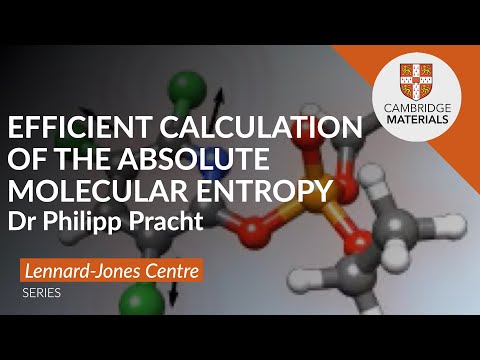Description:
Explore efficient methods for calculating absolute molecular entropy in this 18-minute Lennard-Jones Centre discussion group seminar by Dr Philipp Pracht from Cambridge University. Dive into an automated composite scheme that combines DFT and semi-empirical extended tight-binding methods for accurate and numerically stable entropy calculations. Learn about incorporating anharmonic effects through modified rigid-rotor-harmonic-oscillator approximation and Gibbs–Shannon entropy for extensive conformational ensembles. Discover a specialized meta-dynamics sampling procedure and its extrapolation to completeness. Examine the approach's performance on an established benchmark set, achieving unprecedented accuracy. Consider possible extensions to the workflow and the effects of potential choice and environmental factors, such as implicit solvation. Gain insights into the composition of molecular partition functions, anharmonic approaches to vibrational entropy, and strategies for conformational sampling. Understand the influence and limitations of conformational entropy, as well as the impact of chemical environment on calculations.
Read more

Efficient Calculation of the Absolute Molecular Entropy
Add to list
#Science
#Chemistry
#Computational Chemistry
#Physics
#Thermodynamics
#Statistical Mechanics
#Partition Functions
#Quantum Mechanics
#Quantum Chemistry
#Density Functional Theory